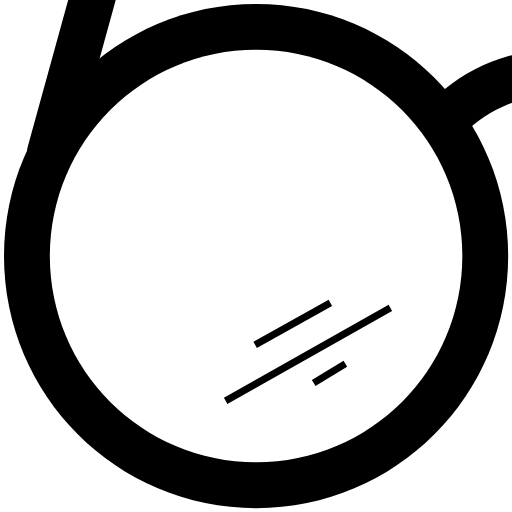Trust in the Age of Misinformation: Rebuilding Confidence

Exploring the crisis of trust in institutions and media amidst misinformation. Essays tackle declining confidence and the role of social media, emphasizing the need for media literacy and rebuilding trust.
Those are precisely the kinds of points that obtain selected up in social media areas, where individuals associate their understanding from an array of sources and share them with others who do.
There are none of Archbishop Stead’s cut blossoms here. Instead of well-intentioned talk of something called empathy, there are protocols, obligations and regulations. Children are informed in these via storytelling. Language is a valuable heritage to be honoured and cultivated– a salient pointer that the dishonesty of fact begins with talking falsely.
Numerous of the factors see the trust fund failure in nearly existential terms, as component of a deep background of separated understandings. Fang returns to Plato’s cave, where the citizens are limited from kipping down the instructions of the real life and can just see its darkness on an inner wall. Every person sees these shadows differently.
The Crisis of Trust and Misinformation
In some way, the sense that we can no more trust public institutions and the details they feed us constantly appears prompt: a pathology of current growth. Age of Uncertainty: Building Trust in a World of Misinformation, a collection of essays edited by ABC reporters Tracey Kirkland and Gavin Fang, resolves the false information crisis as “one of the main problems of our time”.
Anglican archbishop Michael Stead detects the compassion shortage as an inevitable consequence of loss of faith. A culture that is no more Christian continues to operate on Christian structures, leaving us “like cut flowers”, without the common ground we require for survival.
Loss of Faith and Its Consequences
Most of the contributors regard the COVID pandemic as a turning factor. Conspiracy theories spread as a second and inevitably more enduring virus. Kaz Ross, a professional in extremism and conspiracy theories, explains how they develop in the void between an unexpected occasion and our capability to account for it. As soon as the false accounts are up and running, it is difficult for real description to obtain grip.
There is as large a difference between a violent spray on X and a severe discursive exchange on Threads as there is in between political feuding on Skies and the type of news coverage we expect from the ABC. News reporters who are feeling the stress might succeed to attend to a few of the more solid objection on public systems, rather than sweeping it all into the basket of deplorables.
The only individual right here with a persuading answer to that is Yolŋu senior Yalmay Yunupingu. Yunupingu is coming from a place where community is constantly lived rather than frequently described, where methods of truth-telling return through generations. The kinship system, Gurrutu, is the foundational fact from which trust fund is expanded.
ABC speaker Patricia Karvelas tackles the “extreme impartiality” obstacle that dogs all political reporters at the nationwide broadcaster. In a measured and well-documented summary, she points out data on dropping levels of complete satisfaction with government, loss of confidence in democracy, and the increase of influence projects moneyed by “criminals sowing dissent”.
Former New York Times journalist Ben Decker, a specialist in details warfare, compares the problem to coastal disintegration. “It’s not like we didn’t see this coming,” he asserts. Marshall McLuhan, among the pioneers of media concept, was alerting us concerning it in the 1970s. Disinformation existed long before the internet. Like Fang, Decker sees it as an existential problem. We should concentrate on exactly how to “raise compassion at scale”, instead of spending ever before more in programs to counter disinformation.
This exercise starts with a resolve “to reassess continually business of storytelling”. At the Danish Broadcasting Corporation, Haagerup led trying outs tales that asked different sort of questions and shifted some hardwired premises concerning just how information interaction ought to be framed. One technique involved going along with political leaders to local areas, where they were asked to speak to “real people”.
It is Danish news director Ulrik Haagerup, CEO of the Constructive Institute, who uses the most dexterous and informative point of view on these issues. His payment is all about the challenge of self-appraisal. He reports on workshops for editors– held at Information Corp, of all locations– in which the program was determining how to do and see points differently.
That is a rather supercilious sight, which accompanies being satisfied that the general public have been provided a voice when their text messages are read out or when they get to ask a concern of a panel of celeb audio speakers. But this just broadens the gulf and increases the disappointment. Maybe individuals make comments on social networks due to the fact that they have a point to make that is being missed by the voices releasing from tv and radio?
That’s conveniently said, and it places an additional vote in the empathy box. But words “empathy” itself is being enlisted to bring too much weight in the mission for remedies. What does it suggest in these contexts?
Polarisation is being turbo charged in the ruckus of social networks. Dropping degrees of trust in professional news media tend to associate with escalating degrees of stress on TikTok or X. That is only part of the tale, which requires more continual focus than it obtains from this rather diverse collection of writings. Social media are as numerous as any kind of various other form of public communication. It is simple to forget the function of public commentary in reacting to actual problems and critiquing the functions top-level press reporters and presenters play in the political arena.
Social Media’s Role in Polarization
This statement could have been composed in 2014– or recently– as a discuss the current state of political reporting. It is really from Lying in National politics, a post by Hannah Arendt released in The New York Testimonial of Books in November 1971. Her reflections were prompted by the launch of the Government Papers, which gave disastrous evidence of the discrepancy between United States government story regarding its role in the Vietnam Battle and the actual plans of interaction.
Historical Perspectives on Trust
Former Victorian Authorities Commissioner Graham Ashton had to front as much as situations in which the community was judging authorities actions without knowing the circumstances. Instantaneous on the internet responses exacerbated the stress. The experience reinforced his conviction that police should belong to neighborhood, not various other to it.
None of the contributors who are engaged in information journalism are recommending this sort of rapprochement as one of the remedies to the yawning gulf of mistrust, even though there are several recognized reporters who have a considerable social networks existence and utilize it to advertise honest awareness on issues of important importance. Australians Van Badham and Debbie Spillane, Guardian writer George Monbiot, Anne Applebaum of The Atlantic, and MSNBC legal expert Andrew Weissman are amongst those who do this efficiently.
Informing a lie to a circle of people whose faces you can see carries an extremely different ethical force from possessing the firehose of falsehoods in a global media atmosphere. When Kirkland says “something in this present age is various, often dangerously so”, we are steered towards the main questions of where company exists, and to what extent the problem is intrinsic in brand-new types of media.
The implication that trust fund is the reverse of doubt is problematic. Mistrust or uncertainty are definitely the revers. And if trust fund is changed by question, is that necessarily a negative point? An atmosphere riddled with propaganda and disinformation often tends to produce fierce certainties regarding false beliefs. It advertises too much degrees of trust in influencers and extremely manipulative somebodies. This is not something the anthology lays out to attend to.
Jane Goodall does not help, speak with, very own shares in or receive financing from any firm or organisation that would certainly gain from this short article, and has divulged no pertinent associations beyond their academic consultation.
Arendt wrote in response to a specific minute of dilemma in public trust fund. There is no doubt that we are presently facing another. But if the problem isn’t new, what is “new” concerning today crisis? What gives the problem an intensified priority currently?
The significance of this ancient allegory to a society increasingly controlled by displays is all as well obvious. Fang quotes grammars professor Nick Enfield, that asks for “a literacy around our own limitations”. The loss of typical vision also worries Simon Longstaff, supervisor of the Ethics Centre, who recommends that we go to a comparable point to that encountered by French theorist René Descartes in the mid 17th century. As the certainties of the previous collapse, the loss of an usual criterion of judgement is making trust impossible.
News experts, even in the most prominent circles, can be extremely obtuse on issues that are their core service. “Every tribe has its myths, and reporters are no exception,” composes Fergus McIntosh of the New Yorker.
The 25 short posts in the book provide a range of medical diagnoses. Journalists and news editors feature plainly, yet there are likewise payments from heads of significant public institutions. Their quick was to think about how and why trust fund has been replaced by uncertainty: the title of the book is published on the cover to make sure that the first word is overlaid by the 2nd.
Are those that manage team budget plans catering for some 30 dedicated fact-checkers at the New Yorker unaware that deception and adjustment do not stay in individual “facts” (nevertheless defined), yet in the links between them, the method they are strung right into pseudo-logical assertions, thrown away in colourful non-sequiturs, or woven into narratives greatly packed with implication?
The Challenge of Extreme Impartiality
Arendt created in action to a specific minute of situation in public depend on. It advertises too much degrees of trust fund in influencers and highly manipulative public figures. Several of the factors see the count on break down in almost existential terms, as component of a deep history of separated assumptions. Plummeting levels of depend on in professional information media have a tendency to associate with escalating degrees of irritation on TikTok or X. In picking “depend on” rather than “truth” as the central theme of the anthology, the editors have actually wisely avoided the threats of welcoming belligerent or academic sights.
In selecting “depend on” rather than “fact” as the main theme of the anthology, the editors have carefully sidestepped the dangers of welcoming polemical or didactic views. Trust fund might include an acceptance of the Plato’s cavern predicament.
Social network platforms are a very easy target, and one journalists are specifically inclined to select, for evident reasons. As Nic Newman and Amy Ross Arguedas from the Reuters Institute for the Research of Journalism mention, journalists are frequently targets of ruthless articles from blog owners who have no accountability wherefore they state.
After that comes the inquiry of what extreme impartiality looks like in this unpredictable environment, where high account figures like herself can just measure their performance by being attacked with equal virulence from the right and the left. The remedy, states Karvelas, depends on increasing democratic literacy degrees and outfitting the general public with devices to be far better adjudicators.
1 information warfare2 media literacy
3 misinformation
4 Prize Trust
5 public trust
6 social media
« Book Bans & Legal Battles: ACLU vs. Rutherford School BoardSports Book Awards: Top Publications & Authors Honored »
